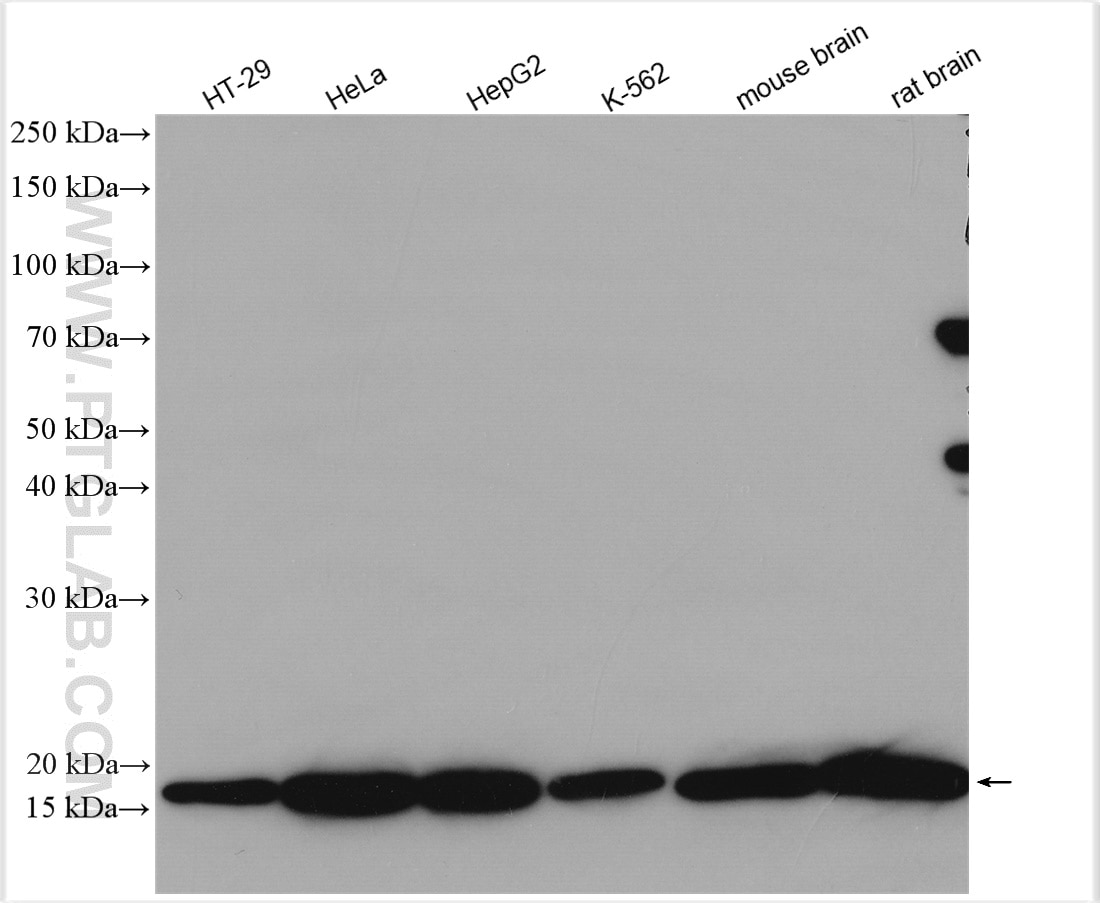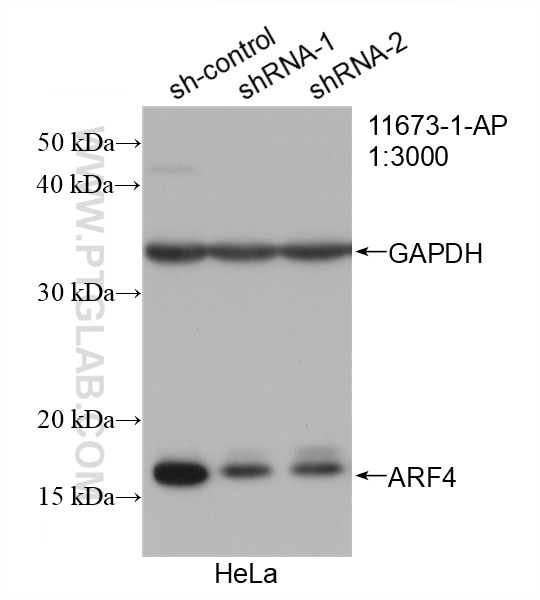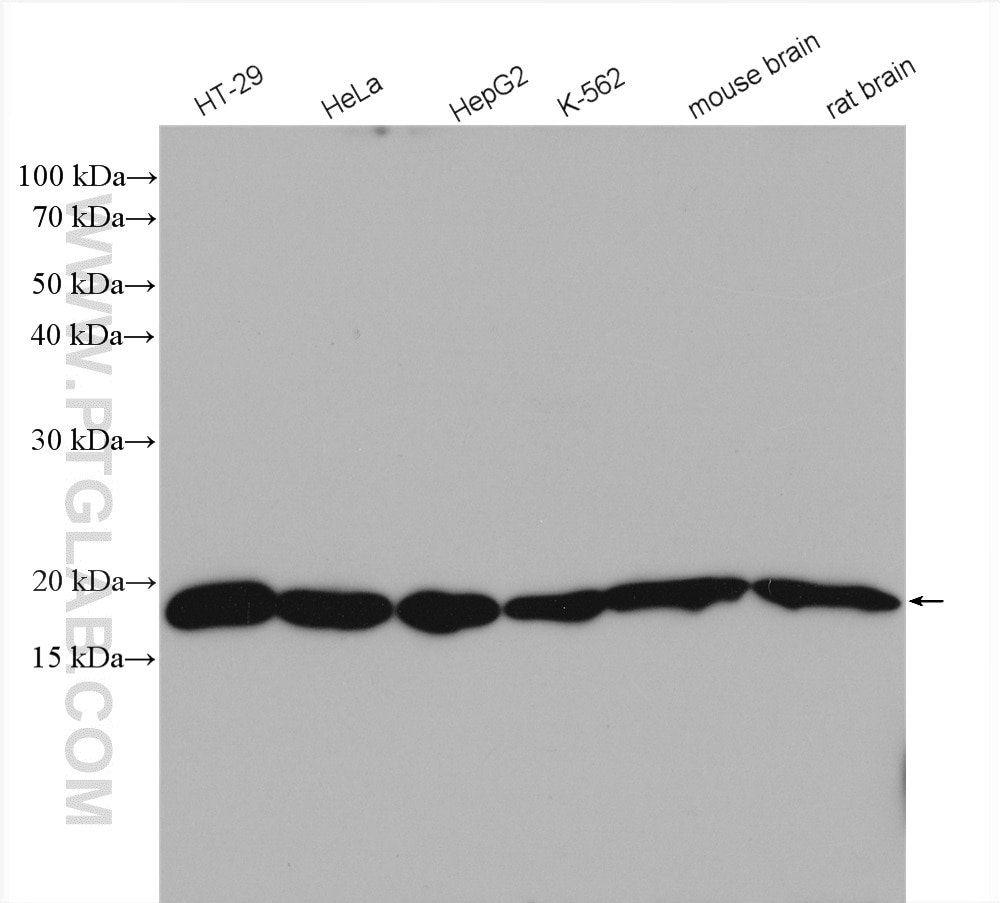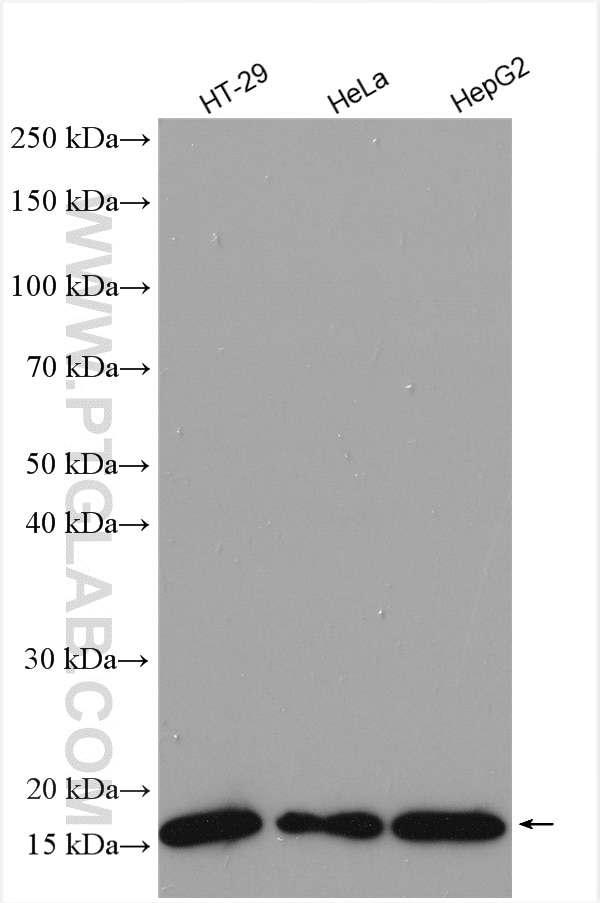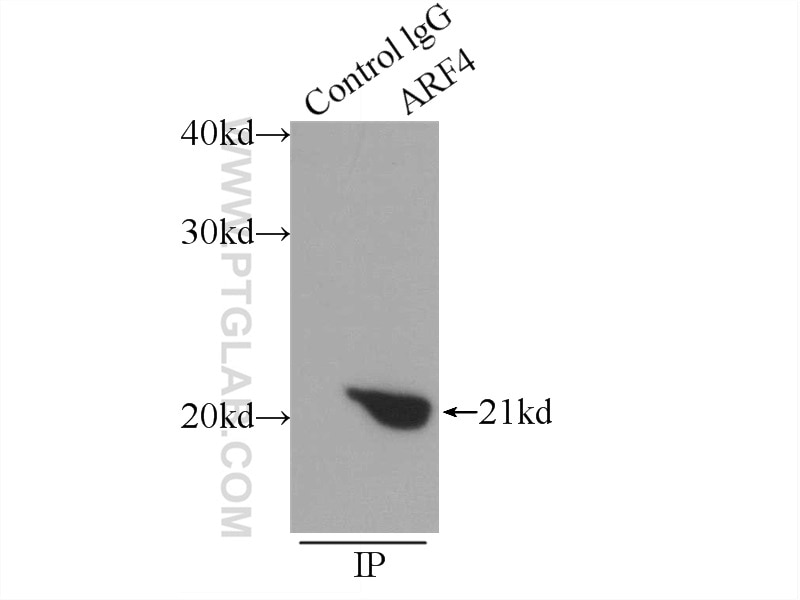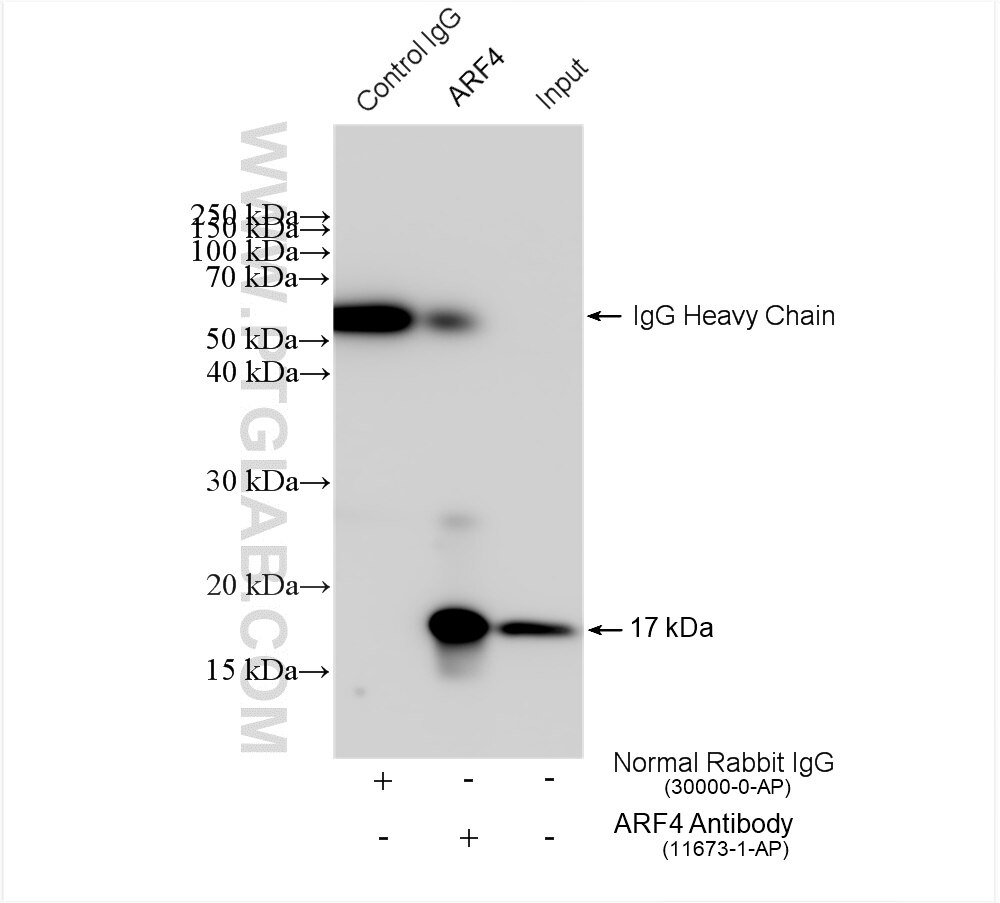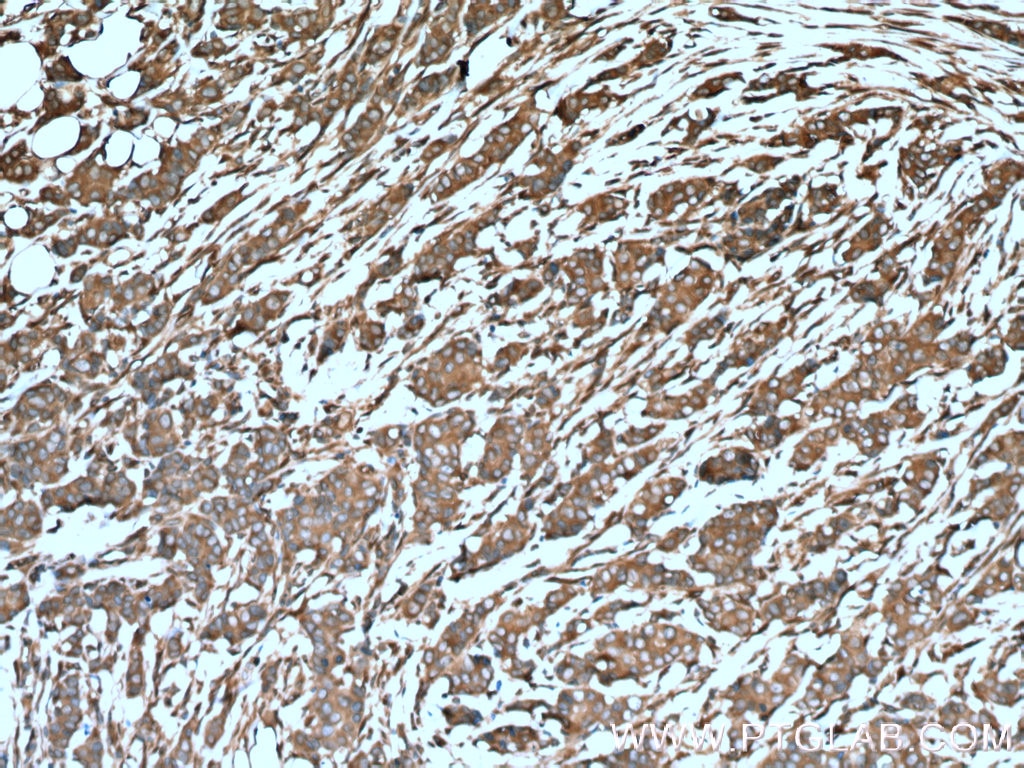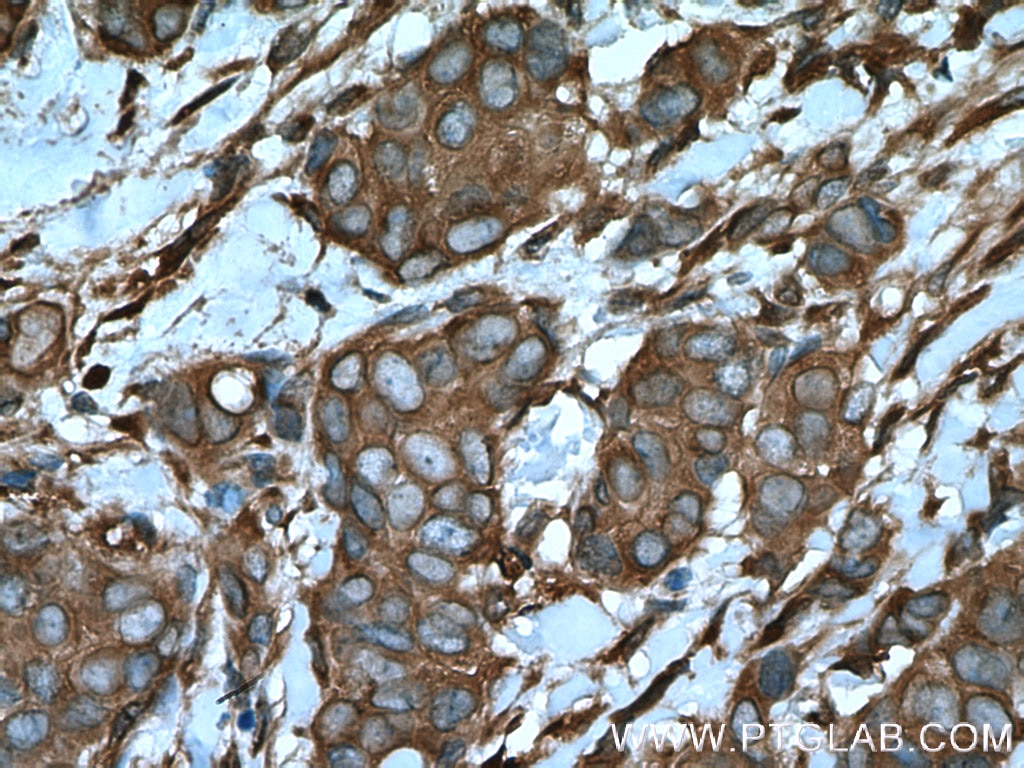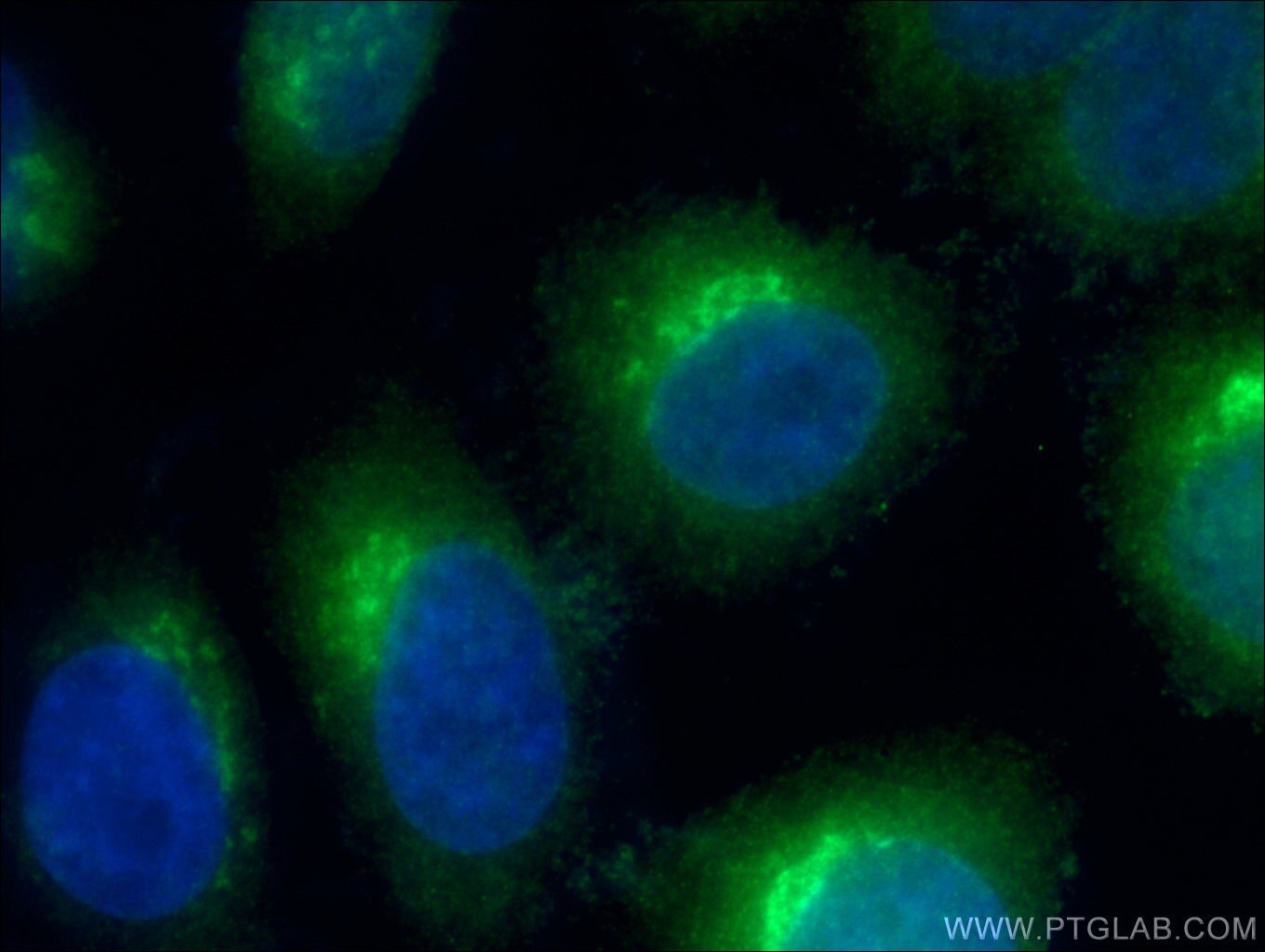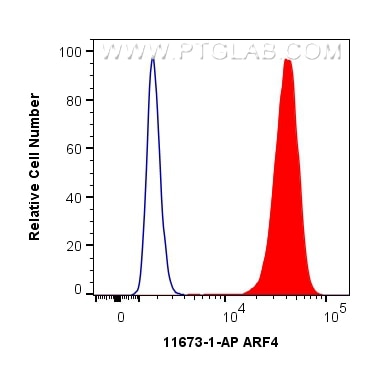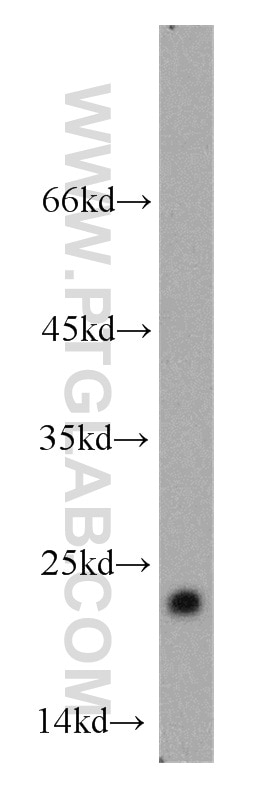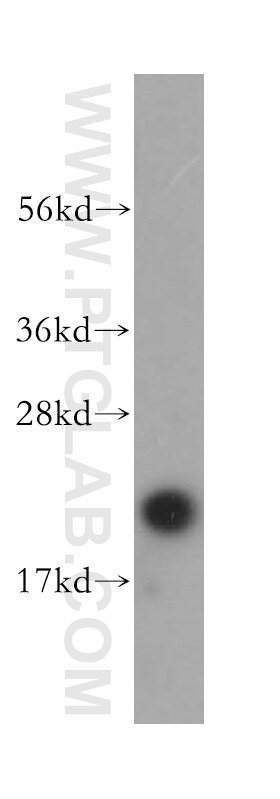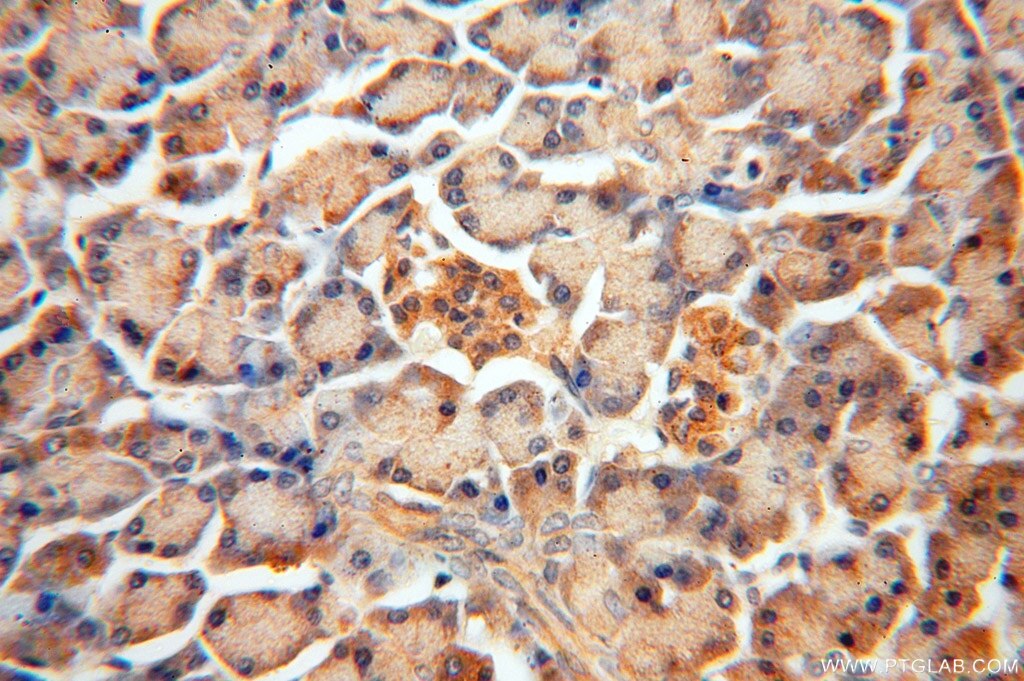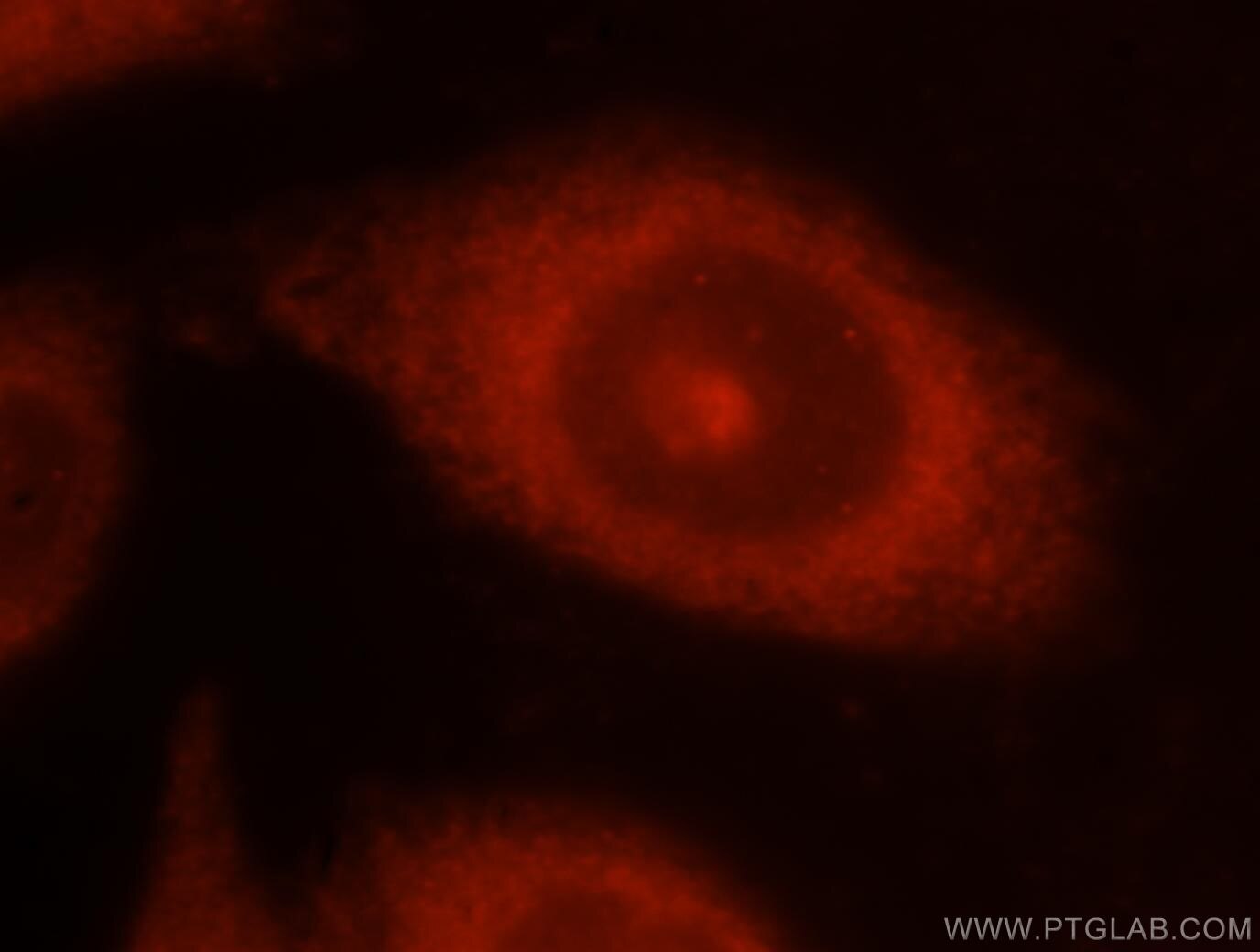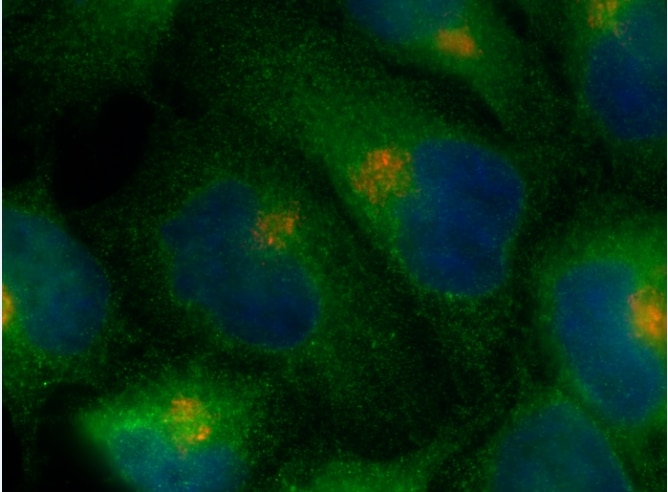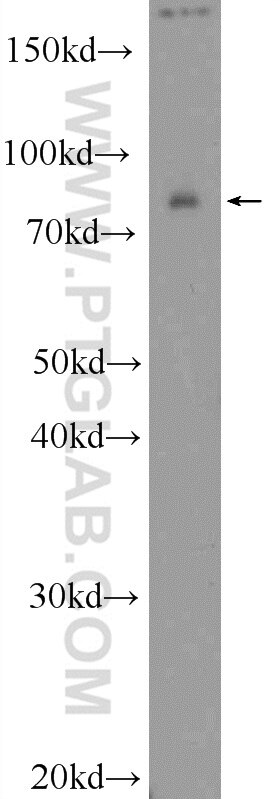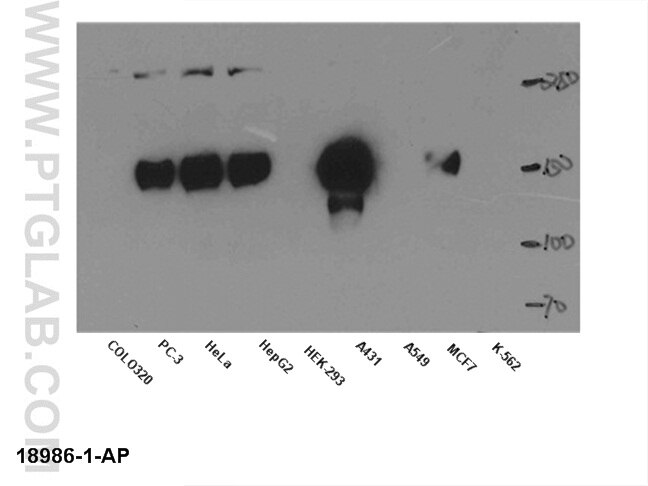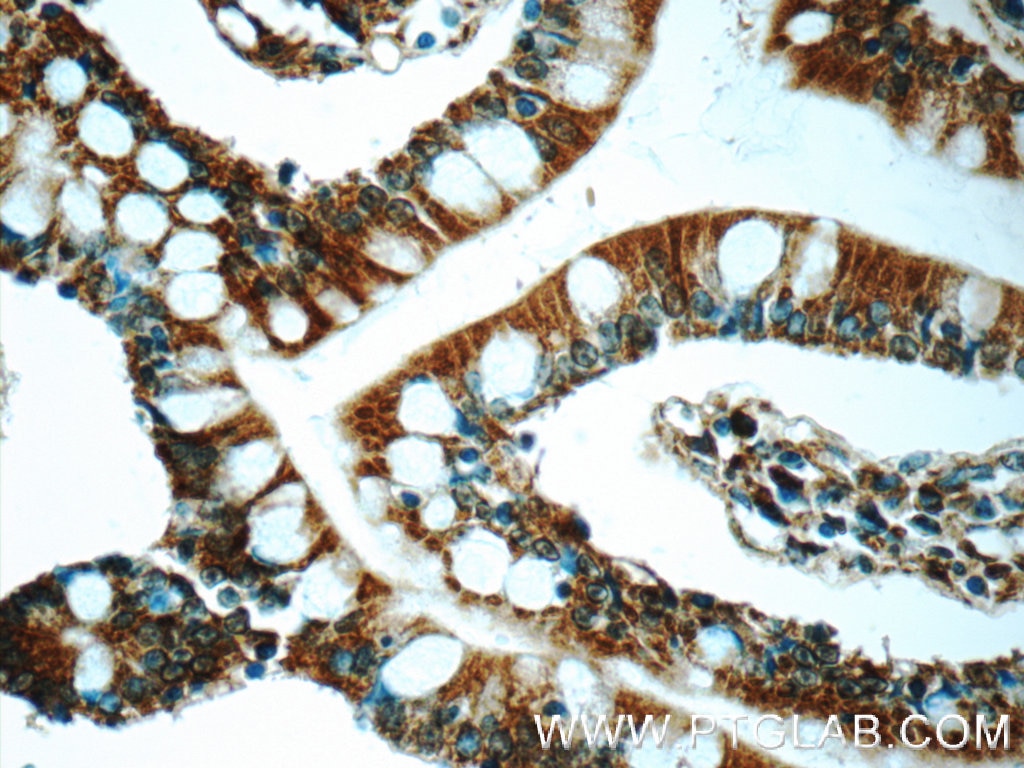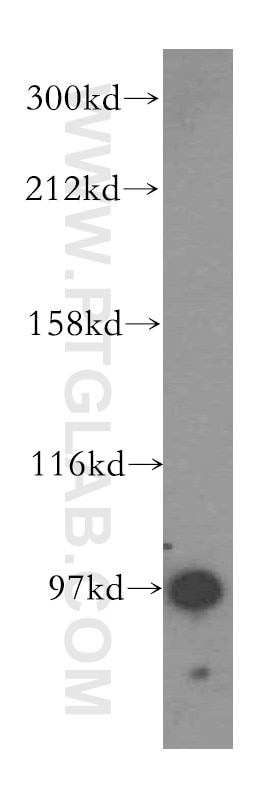- Phare
- Validé par KD/KO
Anticorps Polyclonal de lapin anti-ARF4
ARF4 Polyclonal Antibody for WB, IP, IF, IHC, ELISA, FC (Intra)
Hôte / Isotype
Lapin / IgG
Réactivité testée
Humain, rat, souris
Applications
WB, IHC, IF/ICC, FC (Intra), IP, ELISA
Conjugaison
Non conjugué
N° de cat : 11673-1-AP
Synonymes
Galerie de données de validation
Applications testées
| Résultats positifs en WB | cellules HT-29, cellules HeLa, cellules HepG2, cellules K-562, tissu cérébral de rat, tissu cérébral de souris |
| Résultats positifs en IP | cellules HepG2, tissu cérébral de souris |
| Résultats positifs en IHC | tissu de cancer du sein humain, il est suggéré de démasquer l'antigène avec un tampon de TE buffer pH 9.0; (*) À défaut, 'le démasquage de l'antigène peut être 'effectué avec un tampon citrate pH 6,0. |
| Résultats positifs en IF/ICC | cellules HepG2, |
| Résultats positifs en FC (Intra) | cellules K-562 |
| Résultats positifs en cytométrie | cellules K-562, |
Dilution recommandée
| Application | Dilution |
|---|---|
| Western Blot (WB) | WB : 1:1000-1:6000 |
| Immunoprécipitation (IP) | IP : 0.5-4.0 ug for 1.0-3.0 mg of total protein lysate |
| Immunohistochimie (IHC) | IHC : 1:50-1:500 |
| Immunofluorescence (IF)/ICC | IF/ICC : 1:50-1:500 |
| Flow Cytometry (FC) (INTRA) | FC (INTRA) : 0.40 ug per 10^6 cells in a 100 µl suspension |
| Flow Cytometry (FC) | FC : 0.40 ug per 10^6 cells in a 100 µl suspension |
| It is recommended that this reagent should be titrated in each testing system to obtain optimal results. | |
| Sample-dependent, check data in validation data gallery | |
Applications publiées
| KD/KO | See 9 publications below |
| WB | See 32 publications below |
| IHC | See 1 publications below |
| IF | See 6 publications below |
Informations sur le produit
11673-1-AP cible ARF4 dans les applications de WB, IHC, IF/ICC, FC (Intra), IP, ELISA et montre une réactivité avec des échantillons Humain, rat, souris
| Réactivité | Humain, rat, souris |
| Réactivité citée | Humain, souris |
| Hôte / Isotype | Lapin / IgG |
| Clonalité | Polyclonal |
| Type | Anticorps |
| Immunogène | ARF4 Protéine recombinante Ag2272 |
| Nom complet | ADP-ribosylation factor 4 |
| Masse moléculaire calculée | 180 aa, 21 kDa |
| Poids moléculaire observé | 16 kDa, 21 kDa |
| Numéro d’acquisition GenBank | BC003364 |
| Symbole du gène | ARF4 |
| Identification du gène (NCBI) | 378 |
| Conjugaison | Non conjugué |
| Forme | Liquide |
| Méthode de purification | Purification par affinité contre l'antigène |
| Tampon de stockage | PBS avec azoture de sodium à 0,02 % et glycérol à 50 % pH 7,3 |
| Conditions de stockage | Stocker à -20°C. Stable pendant un an après l'expédition. L'aliquotage n'est pas nécessaire pour le stockage à -20oC Les 20ul contiennent 0,1% de BSA. |
Informations générales
ARF4, also named as ARF2, belongs to the small GTPase superfamily and Arf family. ADP-ribosylation factors (ARFs) are members of the ARF family of GTP-binding proteins of the Ras superfamily, with 20 kDa protein size. ARFs bind and regulate GTP/GDP cycle by alternating between the active GTP-bound and inactive GDP-bound conformations. ARF family proteins are essential and ubiquitous in eukaryotes. Six highly conserved members of the family have been identified in mammalian cells. They function in vesicular traffic and actin remodelling and other bioprocesses in cells. ARF4 and ARF5 are class II ARFs. Their function are not fully described. (PMID: 7759471, PMID: 16042562). This antibody can bind ARFs for the close sequences.
Protocole
| Product Specific Protocols | |
|---|---|
| WB protocol for ARF4 antibody 11673-1-AP | Download protocol |
| IHC protocol for ARF4 antibody 11673-1-AP | Download protocol |
| IF protocol for ARF4 antibody 11673-1-AP | Download protocol |
| IP protocol for ARF4 antibody 11673-1-AP | Download protocol |
| Standard Protocols | |
|---|---|
| Click here to view our Standard Protocols |
Publications
| Species | Application | Title |
|---|---|---|
Nat Cell Biol A CREB3-ARF4 signalling pathway mediates the response to Golgi stress and susceptibility to pathogens. | ||
Nat Commun Ciliary membrane proteins traffic through the Golgi via a Rabep1/GGA1/Arl3-dependent mechanism. | ||
Proc Natl Acad Sci U S A Whole-genome RNAi screen highlights components of the endoplasmic reticulum/Golgi as a source of resistance to immunotoxin-mediated cytotoxicity.
| ||
Oncogene A CREB3-regulated ER-Golgi trafficking signature promotes metastatic progression in breast cancer. |
